By James “Alex” Alexander
Whether you are a traditional on-premise supplier or a cloud-based subscription business, “customer success” is where the big dogs play.
What is customer success?
“Customer success” is a term bantered about in boardrooms and breakrooms in different ways. It has been perceived as a business model, a company-wide priority, an organization, a profession, or a technology.[1]
Research for my recent study, “Customer Success: Managing the Customer Experience for Loyalty and Profit,” [2] confirmed this disparity—the definitions given regarding customer success and customer success management were as varied as Mexican chilies at Santa Fe’s Saturday farmers’ market.
Customer success is a strategy and a philosophy. It is a way of approaching how you interact with your customers and your marketplace. But an important understanding is that customer success is personal. Just as kids in a candy store might prefer different treats, each customer may value certain outcomes more highly than others at a given point in time, and hence, customer success varies from person to person. So I prefer a concrete, actionable definition.
Customer success is a customer state of mind in which a specific customer (let’s call her a key player) feels that she has achieved her desires (business outcomes and personal wins) while undergoing brilliant customer experiences. Here are definitions of the three requirements of customer success:
- Business outcomes. The results that a key player hopes her organization will get from purchasing and using a supplier’s offerings such as increased revenue, lowered downtime or enhanced productivity.
- Personal wins. The results that a key player hopes will happen directly to her from purchasing, using a supplier’s offerings or both. This could be job security, personal recognition or less job hassle.
- Customer experience. The customer’s perception of a supplier’s performance, including activities that do not directly touch the customer but that affect the customer’s overall view of the supplier. Brilliant customer experience occurs when the seven things that customers want, expect and deserve are met.[3]
Figure 1: Brilliant Customer Experiences Enable Customer Success
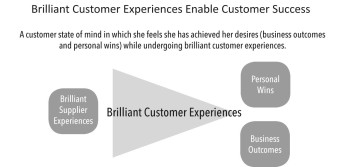
The Brilliant Customer Success Performance Chain
For those of you serious about delivering success, I recommend using the Brilliant Customer Success Performance Chain as a guide, as Figure 2 shows. It is a robust model applicable to almost all organizations for planning, building, implementing, monitoring, diagnosing, and enhancing customer success results. I will start our discussion on the far right side of the chain and work backward.
Figure 2: Brilliant Customer Success Performance Chain

Business Results
This is your reward for doing customer success right. Selfishly, your desired outcome as the supplier is business results. Yes, there can be a multitude of preferable outcomes, but for most organizations, there are two vital business results that trump all others: new streams of profitable growth to fund the future of the business, and brand dominance based on a reputation superior to your rivals’.
Customer Impact
Customer loyalty drives business results. Loads of research over the last several years show that the loyalty of your customers is a prime driver of the business results discussed above and outlined in Figure 3. There is a direct relationship. Loyal customers buy more and more, again and again, rarely quibbling over price.[4]
Figure 3: Customer Impact Drives Supplier Business Results
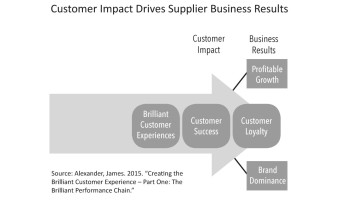
Emotionally, loyal customers tout your attributes far and wide and gladly provide testimonials to woo your prospects for you. Loyal customers are the crown jewels of your resources and should be guarded as a miser would a strongbox. If we embrace the eminent management consultant Peter Drucker’s declaration in Management: Tasks, Responsibilities, Practices that the purpose of a business is to get and grow customers, customer loyalty is the secret sauce of the recipe.[5]
Customer success drives customer loyalty. As discussed, to earn that loyalty, you must deliver customer success as each key player in the customer account defines it.
Brilliant customer experiences enable customer success. The promise of customer success requires brilliant customer experiences. Like the catalyst in a chemical reaction, a brilliant customer experience releases the full potential of a supplier-customer relationship. Customer experience is shaped at every touchpoint—every encounter or contact the customer has with your organization.
Touchpoint Management
Brilliant employee performances drive brilliant customer experiences. The more closely your people give the customer what they need, want, and expect at each step in the decision-making process, the more powerful the moment of truth, and the more likely the customer will invite you to participate in the next decision step. Figure 4 shows the progress from touchpoint management to business results.
Figure 4: Touchpoint Management Effects on Business Results
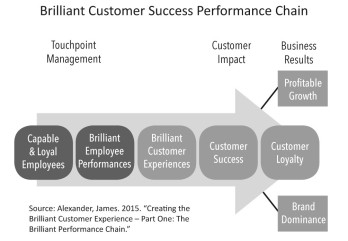
Capable and loyal employees are required to deliver brilliant employee performances. Your frontline personnel must have the capabilities needed to interact with the customer the right way at the right time.
Figure 5 shows how performance systems provide the information and tools required to help your capable and loyal employees in their moments of truth.
Figure 5: How Performance Systems Affect Business Results
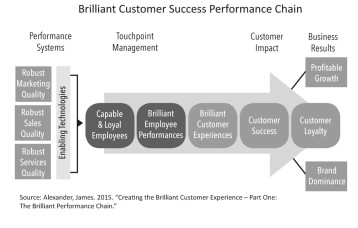
Leadership drives the bus in creating a culture of success and in building and implementing a compelling blueprint to guide implementation, as shown in Figure 6. As we all know, if the big dogs don’t get off the porch, the pack doesn’t hunt.
Figure 6: How Leadership Can Build a Culture of Success

Leading the Pack
Customer success is much more than the latest marketing mantra…it is a strategy, a philosophy, a way of doing business. It can make your customer more successful, your company more successful, and hopefully, you will be more successful. Act like the big dog you are and lead the customer success pack!
Note: This article was adapted from Alex’s new book Brilliant Customer Success: Managing the Customer Experience for Profitable Growth and Brand Dominance, due to be released in November 2016.
References
[1] “An Executive Primer to Customer Success Management.” April 2014. Thought Leadership Paper. Forrester.
[2] Alexander, James A., EdD. 2016. Customer Success: Managing the Customer Experience for Loyalty and Profit. Alexander Consulting and Service Strategies Corporation.
[3] Alexander, James A., EdD. January 26, 2015. “Brilliant CX: The 7 Things Your Customers Want, Expect, and Deserve.” LinkedIn Blog.
[4] Mehta, Nick. October 18, 2015. “The 5 Kinds of Customer Success.” Gainsight, Venturebeat.
[5] Drucker, Peter F., 1974. Management: Tasks, Responsibilities, Practices. New York: Harper & Row.
____________________________________
Join the Center for Services Leadership at Compete Through Services Symposium on October 27th, 2016, to hear James “Alex” Alexander, Alexander Consulting, speak on Customer Success Management: The Marvelous Opportunity to Grow Your Services Business.
_____________________________________

James “Alex” Alexander is founder of Alexander Consulting, a management consultancy that helps product companies build brilliant services. Contact him at 239-671-0740, alex@alexanderstrategists.com or visit www.brilliantcustomersuccess.com for information and valuable resources to speed your journey to brilliant customer success.
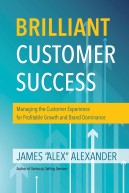
Check out my new book!
BRILLIANT CUSTOMER SUCCESS
MANAGING THE CUSTOMER EXPERIENCE FOR PROFITABLE GROWTH AND BRAND DOMINANCE
by James “Alex” Alexander

 Beth Sepnieski has been the Human Resources Director for the W. P. Carey School of Business since April 2004. She earned her Bachelor of Science degree in Human Resources and a Masters in Education with an emphasis in Counseling and Human Relations. Beth also has a senior professional human resources (SPHR) certification through the Society for Human Resources (SHRM) and has been trained and certified in the interpretation of the Predictive Index; a self-assessment tool used within the School to help improve communication, team interaction, and decision making at all levels.
Beth Sepnieski has been the Human Resources Director for the W. P. Carey School of Business since April 2004. She earned her Bachelor of Science degree in Human Resources and a Masters in Education with an emphasis in Counseling and Human Relations. Beth also has a senior professional human resources (SPHR) certification through the Society for Human Resources (SHRM) and has been trained and certified in the interpretation of the Predictive Index; a self-assessment tool used within the School to help improve communication, team interaction, and decision making at all levels.



 Dr. Douglas Olsen, Academic Director of SSI, explains advantages of the new format, “we provide incredibly solid grounding in service excellence during the first module and then, with these foundational principles in place, in the second module we introduce key frameworks for implementing strategies for leading service-centric organizations. Throughout the program we create opportunities for engaged discussion and collaborative learning.” The Institute curriculum is led by academics and business practitioners who are at the vanguard of service, and is delivered in a university environment at McCord Hall, of the W. P. Carey School of Business, Arizona State University.
Dr. Douglas Olsen, Academic Director of SSI, explains advantages of the new format, “we provide incredibly solid grounding in service excellence during the first module and then, with these foundational principles in place, in the second module we introduce key frameworks for implementing strategies for leading service-centric organizations. Throughout the program we create opportunities for engaged discussion and collaborative learning.” The Institute curriculum is led by academics and business practitioners who are at the vanguard of service, and is delivered in a university environment at McCord Hall, of the W. P. Carey School of Business, Arizona State University. 
 ROUND:
ROUND: 
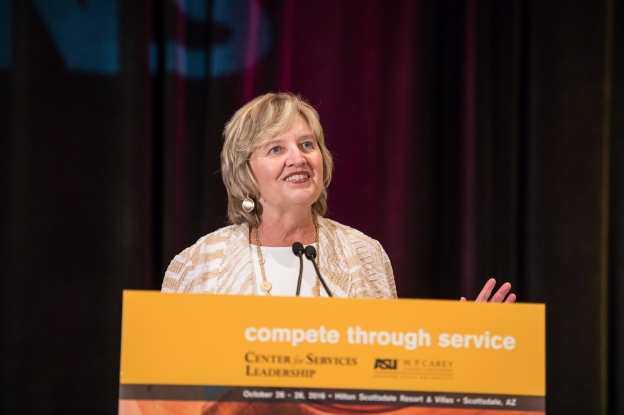





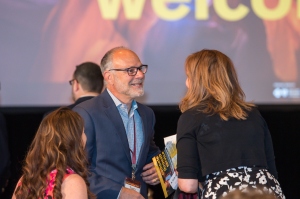

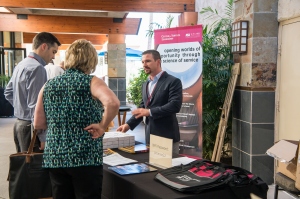




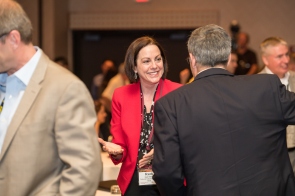

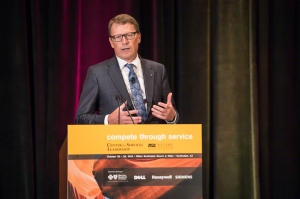

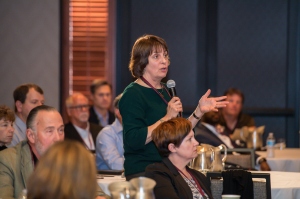


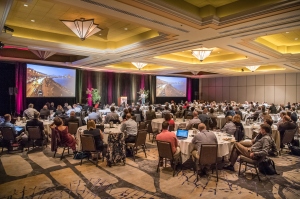

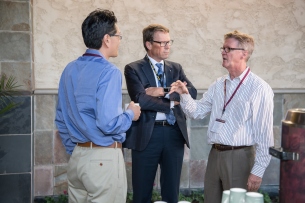
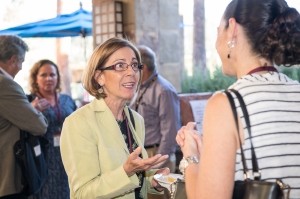

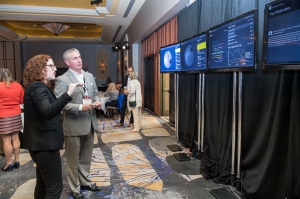

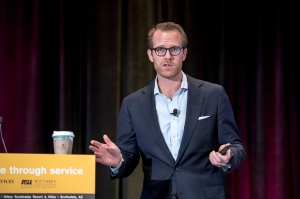


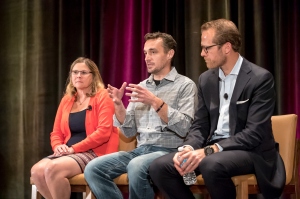

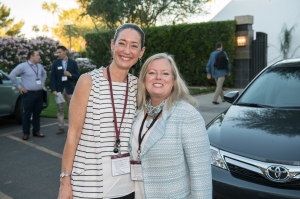
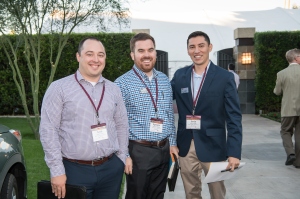
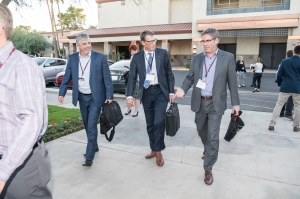
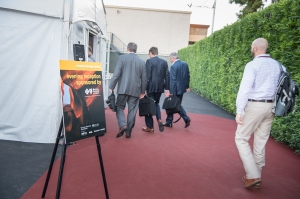



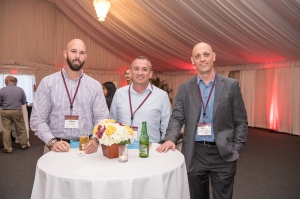
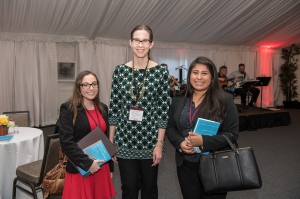
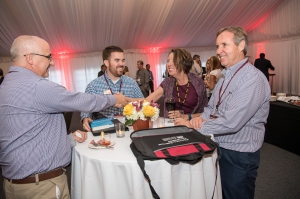
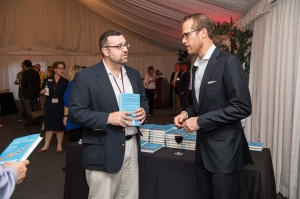
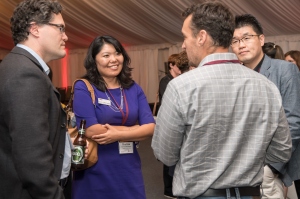
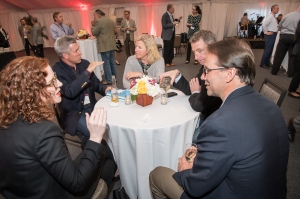

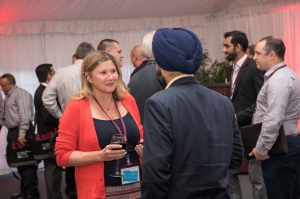
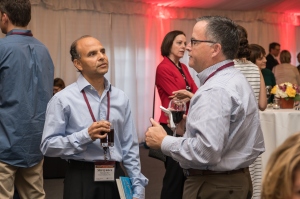
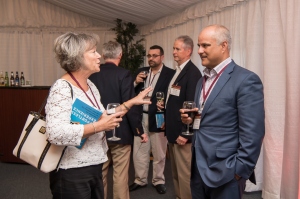


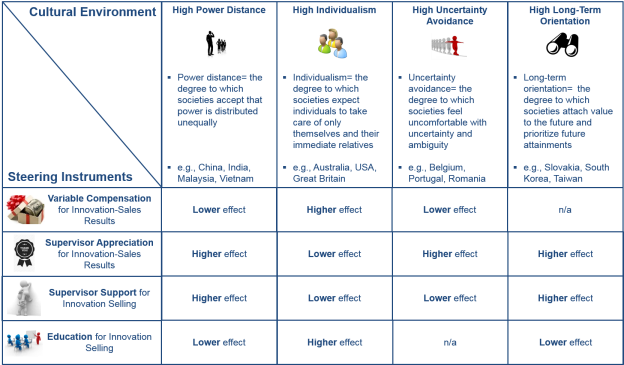 To enhance your firms’ innovation commercialization through intercultural sales force steering, we recommend three specific actions. Implementing these recommendations may help your company to exploit these large potentials:
To enhance your firms’ innovation commercialization through intercultural sales force steering, we recommend three specific actions. Implementing these recommendations may help your company to exploit these large potentials: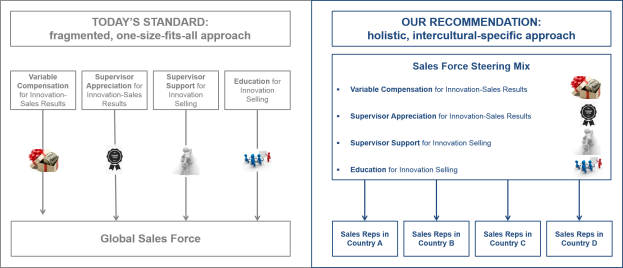

 Sebastian Hohenberg
Sebastian Hohenberg Brands are created by companies, but it’s the end customer who ultimately determines what the brand means to them. So, how do customers come to truly understand a brand and what it stands for?
Brands are created by companies, but it’s the end customer who ultimately determines what the brand means to them. So, how do customers come to truly understand a brand and what it stands for?








 Carol Fink is Director of Executive Relations at Verizon. In her current role, she has responsibility for voice of the customer analytics and process improvements across Verizon’s major businesses. She holds a bachelor’s degree from the University of Michigan and a Master’s degree in Business from the University of South Florida. She is a certified six sigma black belt, a certified work out planner and a “Playing to Win” strategy facilitator. She leverages voice of the customer, employee engagement and six sigma principles to improve the customer experience. Carol is based in Basking Ridge, NJ at Verizon’s corporate headquarters. She is a member of the CXPA.
Carol Fink is Director of Executive Relations at Verizon. In her current role, she has responsibility for voice of the customer analytics and process improvements across Verizon’s major businesses. She holds a bachelor’s degree from the University of Michigan and a Master’s degree in Business from the University of South Florida. She is a certified six sigma black belt, a certified work out planner and a “Playing to Win” strategy facilitator. She leverages voice of the customer, employee engagement and six sigma principles to improve the customer experience. Carol is based in Basking Ridge, NJ at Verizon’s corporate headquarters. She is a member of the CXPA.




